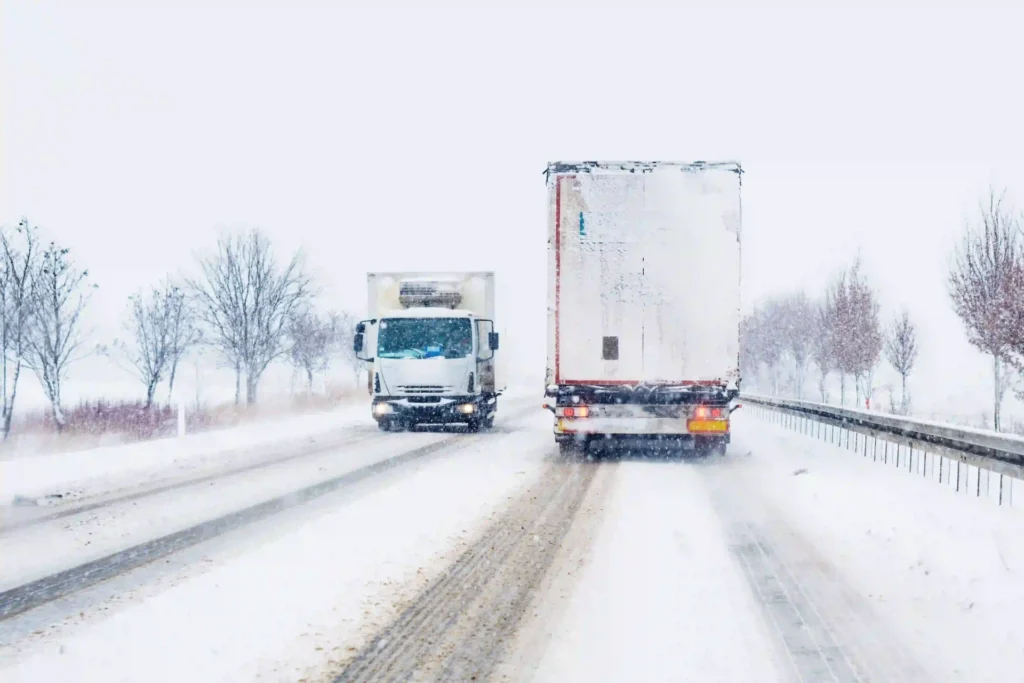When the snow falls and the roads turn icy, safety becomes even more paramount, especially for contractors working in challenging environments. Pacific Gas & Electric (PG&E), a major utility company in California, recognizes this and has implemented particularly stringent winter driving safety requirements for its contractors. Meeting these standards is not only crucial for protecting workers but also essential for maintaining a good standing with PG&E and securing future contracts.
This blog post delves into the specific challenges of winter driving, with a focus on meeting PG&E’s rigorous expectations. We’ll explore the key elements of a comprehensive winter driving safety program and provide actionable insights to help contractors navigate the ice and ensure the well-being of their teams.
Why PG&E Sets the Bar High
PG&E’s stringent requirements stem from their commitment to safety and their understanding of the unique challenges faced by contractors working in their service territory. These challenges include:
- Diverse Terrain: PG&E’s vast service area encompasses a wide range of geographical features, from mountainous regions with winding roads and steep grades to rural areas with limited access and unpredictable weather patterns.
- High-Risk Operations: Contractors often work in close proximity to energized equipment, gas lines, and other hazards, making safe driving practices even more critical.
- Public Safety: PG&E has a responsibility to protect the public, and ensuring the safety of its contractors’ vehicles and drivers is a key part of that commitment.
Key Elements of a PG&E-Compliant Winter Driving Safety Program
To meet PG&E’s expectations and ensure the safety of your team during winter months, a comprehensive safety program should include the following elements:
1. Driver Training:
- Vehicle Inspections: Thorough pre-trip inspections are crucial to identify any potential mechanical issues that could compromise safety. Drivers should be trained on checking tire pressure, fluids, brakes, lights, and other critical components.
- Defensive Driving Techniques: Training should emphasize defensive driving strategies, such as maintaining safe following distances, adjusting speed for conditions, and anticipating hazards.
- Winter-Specific Skills: Drivers need specialized training on navigating icy roads, handling skids, and installing and using tire chains when necessary.
- Route Planning and Navigation: Familiarization with designated routes, potential hazards, and alternative routes is essential, especially in rural areas with limited access.
2. Emergency Preparedness:
- Communication Systems: Reliable communication is vital in emergencies. Ensure drivers have access to cell phones or two-way radios with sufficient battery life or charging capabilities.
- Emergency Kits: Equip all vehicles with winter survival kits, including extra clothing, blankets, food, water, first-aid supplies, and emergency signaling devices.
- Emergency Procedures: Train drivers on what to do in various emergency situations, such as breakdowns, accidents, or encountering hazardous road conditions.
3. On-Site Safety Protocols:
- Speed Limits and Designated Routes: Establish and enforce strict speed limits and designated routes on work sites to minimize risks.
- Backing Up and Maneuvering: Implement clear procedures for backing up, turning, and maneuvering vehicles, including the use of spotters to ensure the safety of other workers and prevent collisions.
- Parking and Shutting Down: Provide guidelines for safe parking and shutting down vehicles, especially on uneven terrain or in areas with potential hazards.
4. Addressing Distracted Driving:
- Cell Phone Policy: Implement a strict policy prohibiting cell phone use while driving, including texting, talking, and using apps.
- Hands-Free Devices: If hands-free devices are permitted, ensure drivers are trained on their proper use and understand the potential for distraction.
- Other Distractions: Address other potential distractions, such as eating, drinking, or adjusting the radio, and emphasize the importance of maintaining focus on the road.
5. Fatigue Management:
- Hours of Service: Comply with hours-of-service regulations to prevent driver fatigue.
- Rest Breaks: Encourage drivers to take regular rest breaks, especially on long trips or during night driving.
- Recognize Signs of Fatigue: Train drivers to recognize the signs of fatigue and take appropriate action, such as pulling over to rest or seeking assistance.
6. Addressing Unique Hazards:
- Icy Roads and Bridges: Provide specific training on navigating icy roads and bridges, emphasizing the dangers of black ice and the need for reduced speeds and increased following distances.
- Working Alone: If drivers work alone, implement additional safety measures, such as regular check-ins, GPS tracking, and emergency response protocols.
- Unfamiliar Terrain: Provide drivers with maps, navigation tools, and adequate information about the terrain and potential hazards before they embark on unfamiliar routes.
Beyond PG&E: The Broader Importance of Winter Driving Safety
While this blog post focuses on PG&E’s requirements, the principles and practices discussed here are relevant to any contractor or supplier operating in regions with winter weather conditions. Whether you’re working in the oil and gas industry, delivering building materials, or transporting goods, prioritizing winter driving safety is essential for protecting your workforce, preventing accidents, and maintaining a strong safety record.
By implementing a comprehensive winter driving safety program, you demonstrate your commitment to the well-being of your employees and your dedication to meeting the highest safety standards. This not only helps you comply with client requirements like those of PG&E but also strengthens your reputation, improves your ISNetworld grade, and positions you as a responsible and reliable partner.
Don’t let winter weather put your team or your business at risk. Contact Cascade QMS today to develop a comprehensive winter driving safety program that meets PG&E’s stringent requirements and protects your most valuable asset – your employees.


